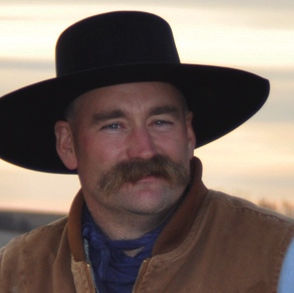The ARISE USA tour is headed to the Pacific Northwest with the last stop in Burley, Idaho, and the interesting part of the trip is that I continue to hit counties that are strong grass-roots counties that still understand the Constitution and the crowds have been excellent, an average of about 350 people per stop.
However, I have heard an ever-growing number of critics who tell me that if I would go to Boise instead of Burley I would get much bigger crowds. First of all, when did a trip to the country become such a difficult endeavor, particularly in the name of protecting our kids’ freedom? Secondly, I think the exact people we need in attendance are showing up. We need people who are going to activate and motivate others to take this country back.
In Burley, Idaho, the family of Randy and Nora Golay, with assistance from Charlotte Rose, hosted the entire tour team for a Dutch oven dinner. Those ole trail cooks on the cattle drives knew what they were doing. What I want to discuss is tri-tip.
I remember my first trip to California when someone told me they were going to grill a tri-tip. Honestly, like most other cattlemen east of the Rocky Mountains at that time, I didn’t really understand what that meant. How can a cut of meat be such a regionalized secret in the beef business? First off, the amount of tri-tip available to sell from each beef animal is very limited. Since I am making a concerted effort to incorporate factual history at every stop along the way, let’s dig into the history of the mysterious tri-tip.
The history books are not clear on who first discovered the tri-tip. What we do know is that each one from the bottom of the sirloin weighs about 2 to 3 pounds after processing and, when cooked and cut properly, is the best beef eating experience anyone could ever ask for.
What we know for sure is that the tri-tip first surfaced in the Santa Maria Valley in California in the 1950s. While there seem to be many who try to claim credit for the discovery, most people commonly recognize a butcher by the name of Bob Schulz as the one who perfected the cooking and preparation that took this cut to epic barbecue greatness.
I honestly have now had tri-tip many times at events in the West but honestly think it was the first time I had it prepared in a Dutch oven and, oh man, was it a home run. Like so many good things in life, you cannot rush a tri-tip into its full potential. You must be patient and slowly bring it to the proper temperature. I also re-emphasize that cutting across the grain is more vital for the tri-tip than any other cut, with perhaps the exception of the flat iron.
As we are going from town to town, state to state talking about the issues, sometimes we lose the real meaning of why we are here: Freedom, liberty and the ability to not only feed ourselves but the entire world. As long as we have food, we have a fighting chance to fix anything.
Our great nation has moved and continues to improve life because history is filled with folks like Schulz who were innovative and accepted the challenge to find something better instead of sitting back and waiting for someone else to create opportunities.
Editor’s note: Trent Loos is a sixth generation United States farmer, host of the daily radio show, Loos Tales, and founder of Faces of Agriculture, a non-profit organization putting the human element back into the production of food. Get more information at www.LoosTales.com, or email Trent at [email protected].
